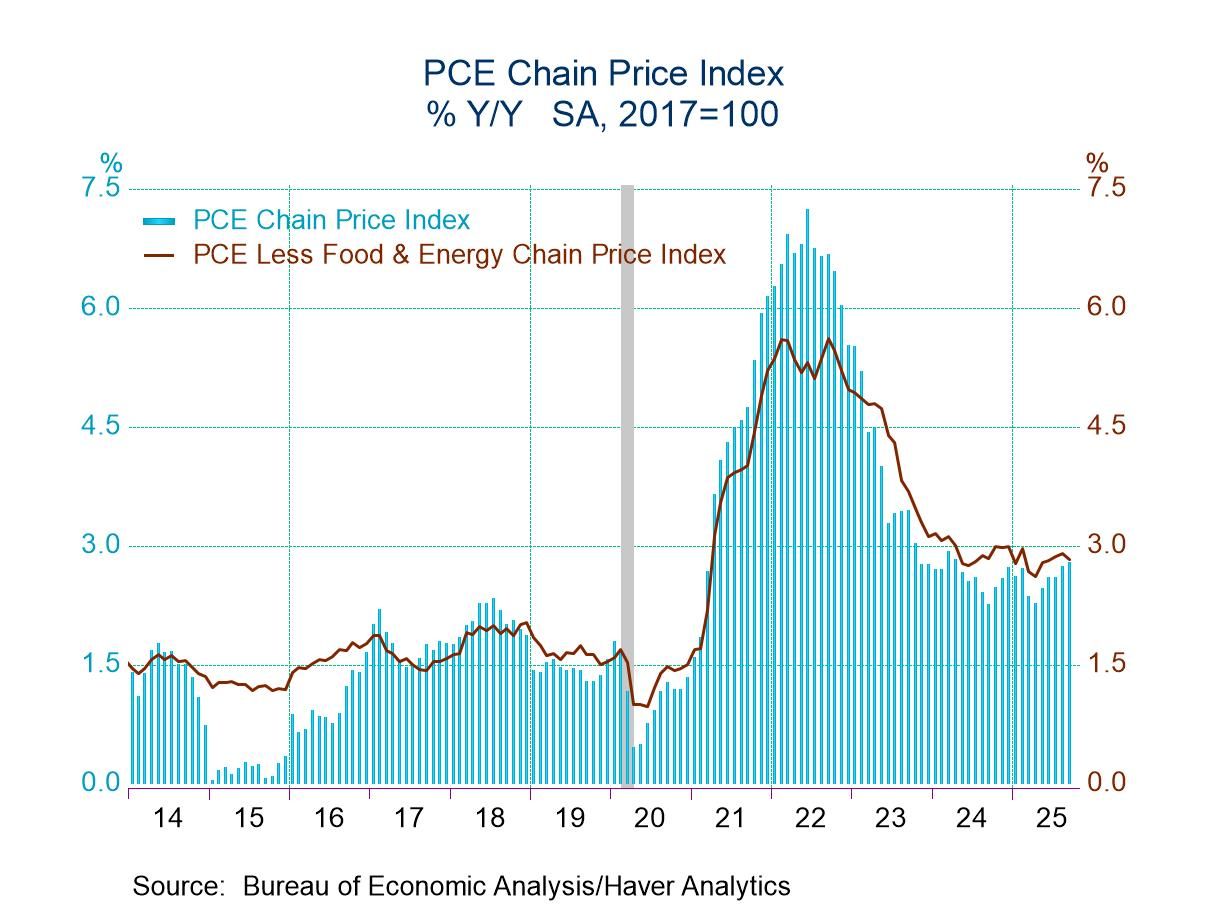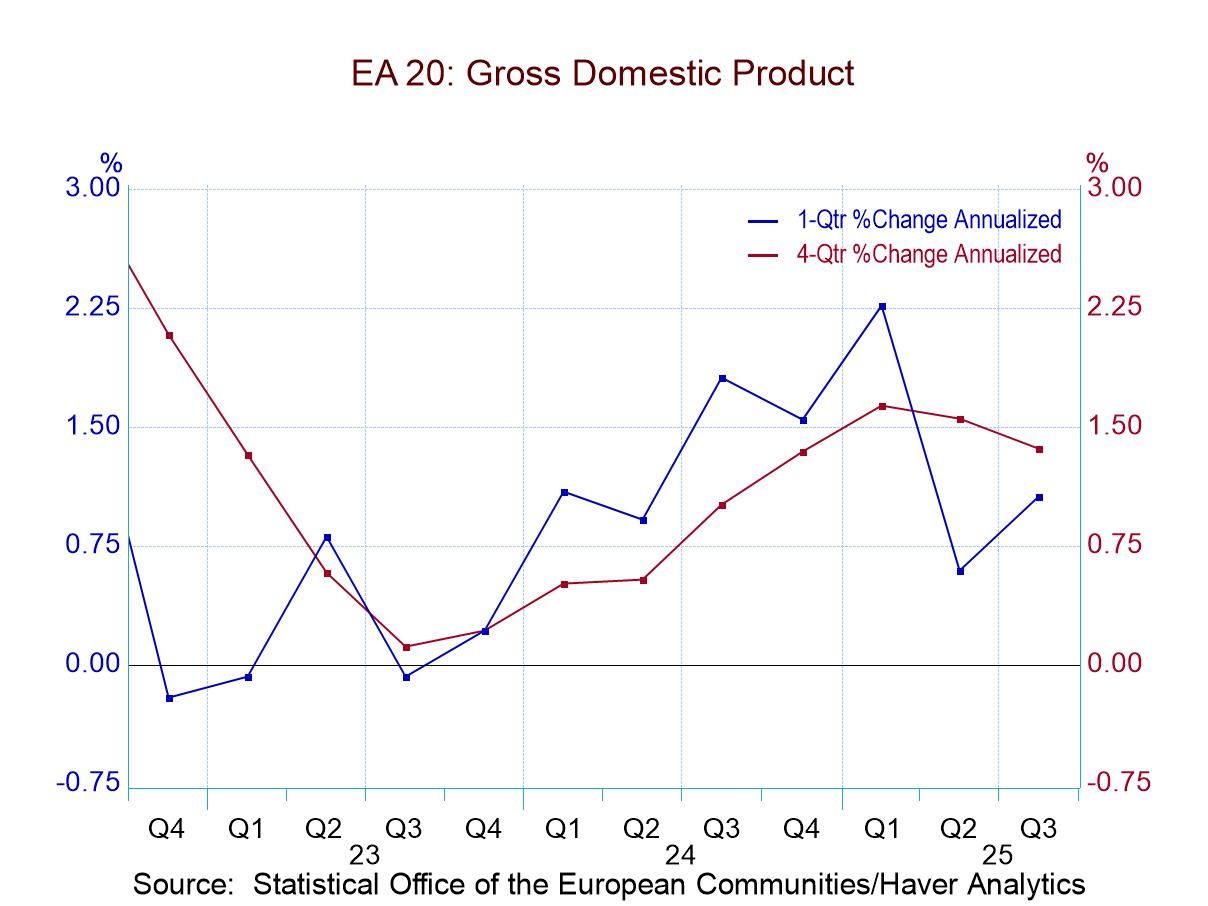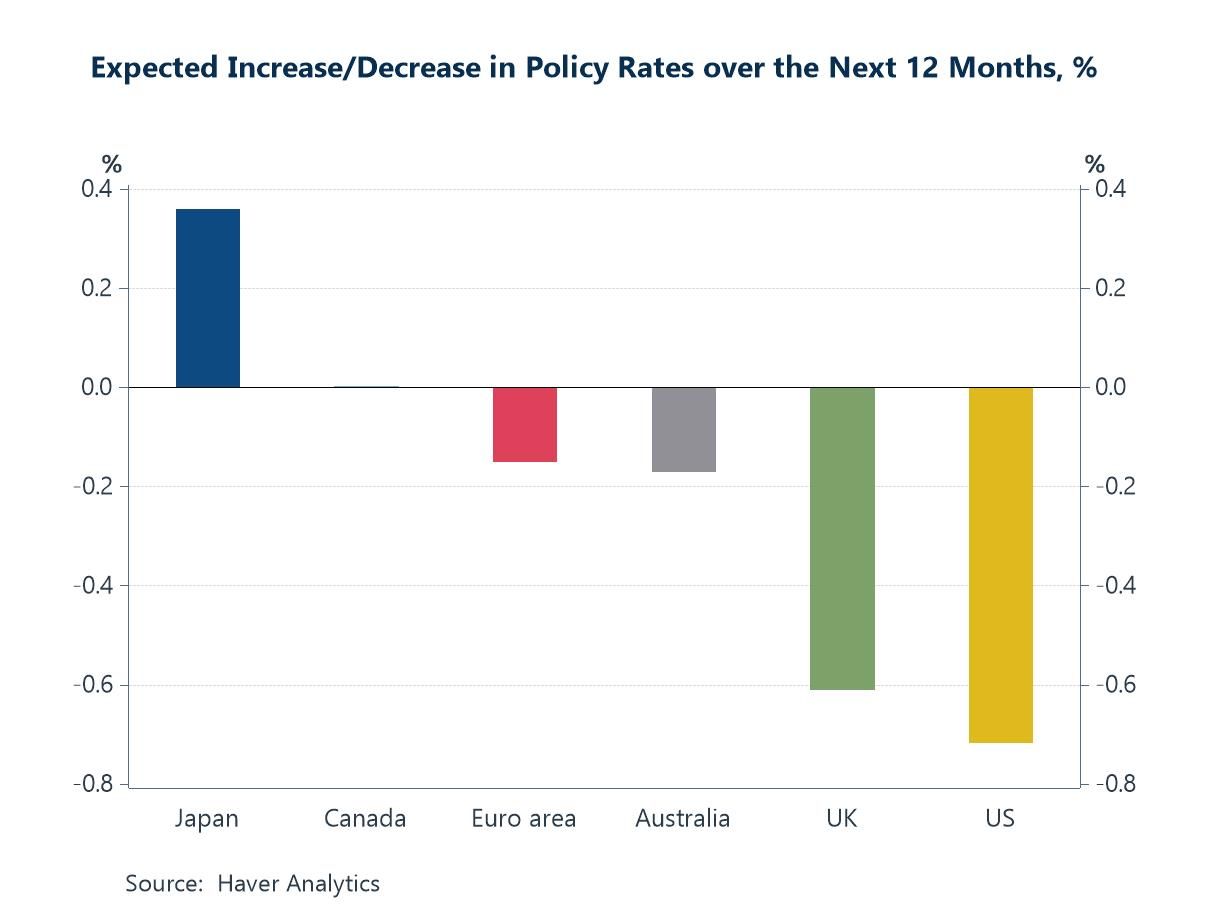Germany’s IFO Improves

The IFO shows reading that are stronger this month and are showing legacy of being in an upswing – the current index, the climate reading and expectations- all are swinging higher.
Despite the clear turn revealed in the chart, the rankings of the climate, current, and expectations readings remain extremely weak. Among the 18 readings for five sectors and a headline on each of three measures only three of these readings – three of eighteen- have standings as of June at or above their historic median (above a ranking of 50%) back to March 1993.
The climate measure shows a ranking in its 21st percentile in June. That corresponds to a reading of -15.3 in June, an improvement from -16.0 in May. Climate readings improved across all sectors in June except retailing where the climate reading backtracked to -20.3 from -18.6. In terms of the sector percentile standings, only construction has a reading above its median- above a standing at its 50th percentile.
For current conditions, the June measure improved to -3.5 from -3.9 in May. The current ranking is still a weak 13.4 percentile standing. In the current index, the manufacturing and retailing sectors each took a step back in June. Services and wholesaling improved month-to-month. Construction was unchanged in the month. The current readings are much more mixed than for the other two environmental responses in climate and expectations. However, current conditions rank at an extremely weak level of 13.4%. The percentile standings are above the 50% level in construction and in retailing.
Expectations stepped up, improving month-to-month to -9.9 in June from -13.3 in May. Improves swept across sectors only leaving out improvement in retailing where conditions owed to -28.1 in June from -25.1 in May. The service sector reading improves sharply with expectations rising to -3.6 from -10.9. However, all readings under expectations are below their respective historic medians. The strongest reading is 39.2% in construction with the weakest being a 14.7 percentile reading in retailing.
The second ranking column, to the far right, re-ranks all the sectors in the various environments since the Russian invasion of Ukraine. That even took an economy that has been recovering from Covid and took readings down to fresh lows. Looking at valued on that short horizon, expectations have rarely been higher; all expectations are in their respective 90th percentile standing except retailing only in its 80.5 percentile- all of these are strong on this reduced timeline. The climate reading is at its 58.5 percentile overall on this short post invasion timeline with all readings except manufacturing having readings above their 50th percentile. However, the current reading while largely stronger than the full period rankings for ‘current’ really are not that different and note that the current conditions continue to be quite weak even over the shorter horizon.
The bottom line seems to be that expectations are turning higher and the climate has improved but the current situation is changing only slowly. This is a case in which ‘survey type data’ seem to be showing or hinting at improvement in train to a greater extent that current data which should be best reflect in traditional ‘hard data’ reports would lag. It is a cause for optimism.

Robert Brusca
AuthorMore in Author Profile »Robert A. Brusca is Chief Economist of Fact and Opinion Economics, a consulting firm he founded in Manhattan. He has been an economist on Wall Street for over 25 years. He has visited central banking and large institutional clients in over 30 countries in his career as an economist. Mr. Brusca was a Divisional Research Chief at the Federal Reserve Bank of NY (Chief of the International Financial markets Division), a Fed Watcher at Irving Trust and Chief Economist at Nikko Securities International. He is widely quoted and appears in various media. Mr. Brusca holds an MA and Ph.D. in economics from Michigan State University and a BA in Economics from the University of Michigan. His research pursues his strong interests in non aligned policy economics as well as international economics. FAO Economics’ research targets investors to assist them in making better investment decisions in stocks, bonds and in a variety of international assets. The company does not manage money and has no conflicts in giving economic advice.






 Global
Global